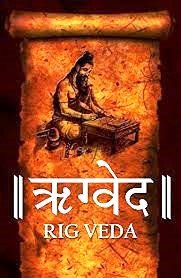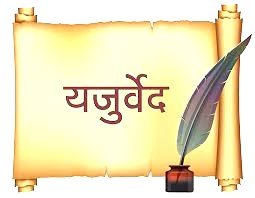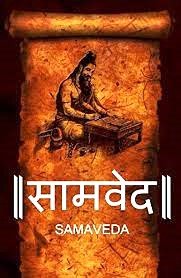INDIA
This subcontinent, extending from the Himalayas in the north to the sea in the south, is known as Bharatvarsha, which in the epics and Puranas has been called ‘Bharatvarsha’ i.e. ‘country of Bharatas’ and the residents here have been called Bharati i.e. children of Bharat. Bharat was the name of an ancient clan. Ancient Indians called their country Jambudweep, i.e. the island of Jambu (Jamun) trees. The ancient Iranians associated it with the name of the Indus River, which they called Hindu instead of Sindhu. This name then spread throughout the West and the entire country came to be known by the name of this one river. The Greeks called it “Inde” and the Arabs called it Hind. In the medieval period this country came to be called Hindustan. This word is also derived from the Persian word “Hindu”. Based on the Greek word “Inde”, the British started calling it “India”. The Vindhya mountain range divides the country into two parts, North and South. In the north, there is a majority of people speaking languages of the Indo-European family and in the south, there is a majority of people speaking languages of the Dravidian family.
Note: The main races that have formed the population of India are as follows – Proto-Australoid, Paleo-Mediterranean, Caucasian, Negroid and Mongoloid.
For convenience of study, Indian history has been divided into three parts – Ancient India, Medieval India and Modern India. Note: The credit for first dividing history into three parts goes to the German historian Christoph Cellarius (1638-1707 AD).
ANCIENT INDIA
1. Sources of ancient Indian history
Information about ancient Indian history is mainly obtained from four sources – 1. Religious texts, 2. Historical descriptions and 4. Archaeological evidence, 3. Books of foreigners.
Important information obtained from religious scriptures and historical texts > The oldest religious scripture of India is Veda, whose compiler was Maharishi
Krishna Dvaipayana is considered to be Vedavyasa. The Vedas preach Vasuddhaiva Kutumbkam. Indian tradition considers the Vedas to be eternal and impersonal. There are four Vedas: Rigveda, Yajurveda, Samaveda and Atharvaveda. These four Vedas are called Samhita.
RIGVEDA

Rigveda
> The collection of systematic knowledge of hymns is called Rigveda. It has 10 mandalas, 1028 suktas (including 11 suktas of Valakhilya text) and 10,462 verses. The sage who recites the verses of this Veda is called Hotri. From this Veda we get information about the political system, history and glory of God of the Aryans.
➤ The third mandala of Rigveda composed by Vishwamitra contains the famous Gayatri Mantra dedicated to the Sun God Savitri. In its 9th mandala, the deity Som is mentioned.
>The handwritten verses of its 8th Mandal are called Khil. The primary source of the idea of a Chatushvarnya society is the Purushasukta described in the 10th Mandal of the Rig Veda, according to which the four varnas (Brahmin, Kshatriya, Vaishya and Shudra) originated from the mouth, arms, thighs and feet of Brahma respectively.
YAJURVEDA

The collection of mantras for recitation and rules to be followed at the time of sacrifice is called Yajurveda. Its reader is called Adhvaryu.
A compilation of rules and regulations of Yagyas is found in Yajurveda.
It also describes the sacrificial ritual.
This is a Veda which is in both prose and poetry.
Samveda

‘Sam’ literally means song. This Veda mainly contains a collection of hymns (mantras) sung on the occasion of yagyas. Its reciter is called Udratri. Its compilation is based on Rigveda.
He is called the father of Indian music.
Note: There is no description of any specific historical event in Yajurveda and Samaveda.
aTHARVAVEDA
This Veda composed by Sage Atharva has a total of 731 mantras and about 6000 verses. Some of its mantras are Purana, Vishnu Purana, Matsya Purana, which are older than the Rig Vedic mantras, Vayu Purana, related to the Vansh Maurya dynasty, Andhra Satvahana Gupta dynasty. Atharvaveda condemns the birth of girls.
Historically, the importance of Atharvaveda lies in the fact that it contains details of the thoughts and superstitions of common people.
Prithivi Sukta is considered a representative Sukta of Atharvaveda. It covers all aspects of human life – house construction, advancement in agriculture, discovery of trade routes, disease prevention, coordination, marriage and love songs, devotion to the king, selection of a king, many plants and medicines, curses, subjugation, atonement, Details of Matribhoomi Mahatma etc. have been given. Some mantras also describe witchcraft.
VEDIC CIVILIZATION
Division of Vedic period into two parts 1. Rig Vedic period-1500-1000 BC. And 2. Later Vedic period – 1000-600 BC. Has been done in.
> Aryans first settled in Punjab and Afghanistan. Max Muller considered Central Asia to be the original habitat of the Aryans. The civilization created by the Aryans was called Vedic civilization. It was a rural civilization. The language of Aryans was Sanskrit.
Note: The word Arya indicates a language group.
> The administrative unit of the Aryans was divided into these five parts in ascending order – clan, village, world, people, nation. The head of the village was called Gramini, the head of Vish was called Vishpati and the ruler of the people was called Rajan.
>Priests and fighters were prominent among the state officials. Vashishtha was a conservative priest and Vishwamitra was a liberal priest. Disha Uttarvedic King
> The words named Suta, Rathkar and Kammadi were called Adhikari Ratni. Their number in the East, including the king, was about 12, while in the West, it was about 12. North Udichi
> Purap Durgapati and the spies who watched the movements of the Spash-people were Dakshin.
Middle
> Vajpati-Gochar was the owner of the land.
> Used to catch extreme criminals.
Note: There is no mention of any kind of judicial officer in Rigveda.
> The assembly and committee were the institutions that advised the king. The Sabha was an organization of noble and elite people while the Samiti represented the general public. Its president was called Ishaan. Women could participate in meetings and committees.
>The king led the tribe in war. The word Gavisthi has been used for war, which means search for cows.
> The Dasarajna battle is mentioned in the 7th Mandala of the Rig Veda, this battle is Parushani
A fight was fought between Sudas and ten people on the banks of river (Ravi), in which Sudas was victorious. The total number of Upanishads is 108 > The Rigvedic society was divided into four varnas (number of Mahapuranas). These varnas were-Brahmin, number of Vedanga is 18 6
Kshatriya, Vaishya and Shudra. This division was based on occupation. Chaturvans are mentioned in the Purushasukta of the 10th Mandal of the Rigveda. It is said that from the mouth of Brahmin supreme man, KshatriyaFrom his arms, Vaishyas were born from his thighs and Shudras from his feet.
The society of Aryans was patriarchal. The smallest unit of society was the family or clan, headed by a father, called Kulap.
> During this period, women used to take part in yagya along with their husbands.
>Child marriage and purdah system were not prevalent.
>The widow could marry the younger brother (brother-in-law) of her deceased husband.
> Women received education. The Rig Veda describes learned women like Lopamudra, Ghosha, Sikata, Apla and Vishwas. Gargi had challenged Yajnavalkya to a debate.
> Women who remained unmarried throughout their life were called Amaju.
> The teacher who taught Vedas and Vedangas for earning a living was called Upadhyaya.
The main beverage of the Aryans was Somras. It was made from vegetables.
> Aryans mainly used three types of clothes – 1. Habitat 2. Domicile and 3. Ushnish. The cloth worn inside was called nivi.
Maharishi Kanad has been called the father of Indian atomism.
>The main means of entertainment of the Aryans were music, chariot racing, horse racing and gaming.
>The main occupation of Aryans was animal husbandry and agriculture.
> Cow was kept in the category of non-killable animal. There is a provision in the Vedas for death penalty or banishment from the country for those who kill or injure a cow.
> The favorite animal of the Aryans was the horse and the most favorite god was Indra.
> The metal discovered by the Aryans was iron which was called Shyam Ayas. Copper was called red ore.
A person who travels far and wide for business was called a merchant.
> The system of barter was prevalent in transactions.
A person who took interest by giving a loan was called a moneylender.
Agni was worshiped as a deity who played the role of mediator between man and God.
> Saraswati was considered the most important and sacred of all the rivers mentioned in the Rigveda. Ganga is mentioned once and Yamuna thrice in Rigveda. In this, Indus river has been mentioned the most number of times.
